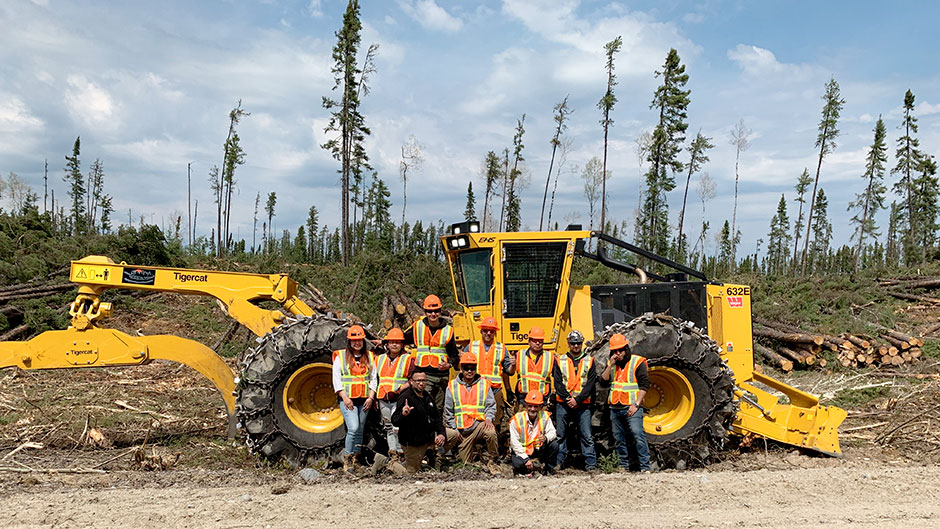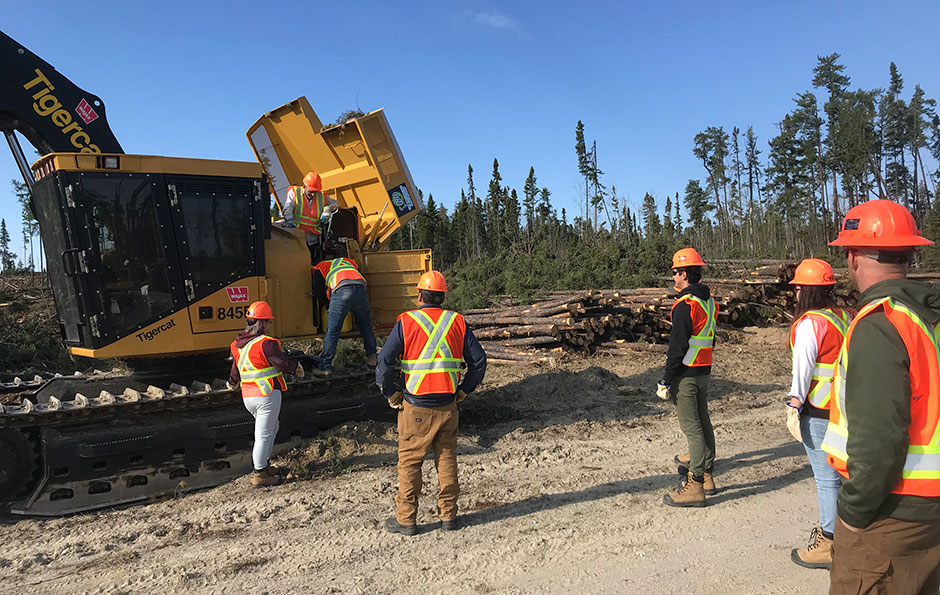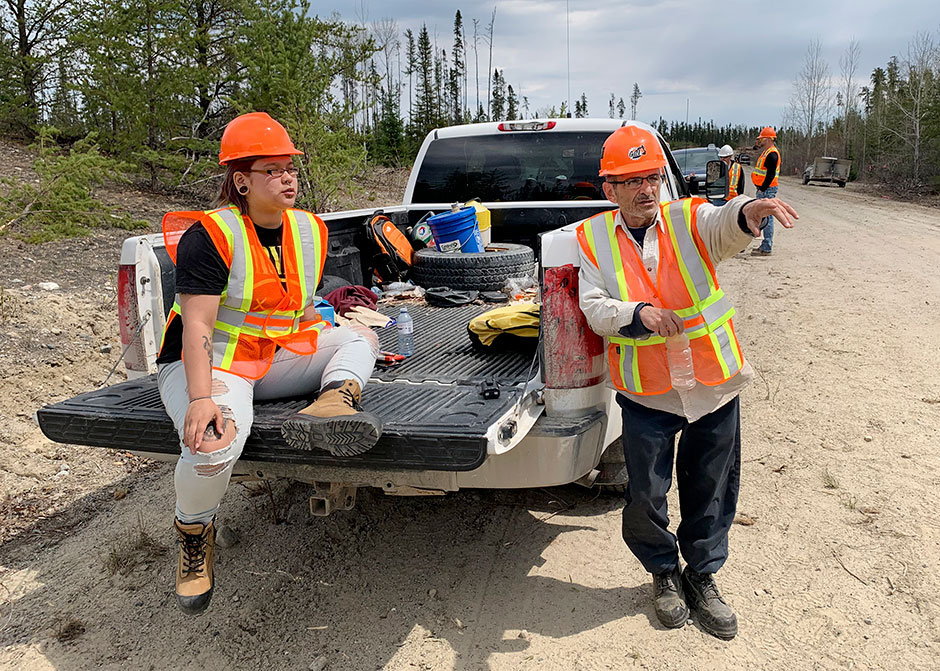25th November 2019
First Nations take control of timber management in Ontario’s Ogoki Forest. Partnering with a Thunder Bay post-secondary institution, the ultimate goal is to develop future careers in forestry in a bid to build a brighter future of economic development and environmental sustainability.
– Chris McMillan
Located approximately 400 km (250 mi) northeast of Thunder Bay, Ontario, just east of the Wabakimi Provincial Park, Ogoki is an 11 000 km² (4,200 mi²) expanse of boreal forest. With a mix of spruce, pine, fir and poplar, it is also a natural habitat for woodland caribou and hundreds of other species. First Nations communities use the land to hunt, gather and conduct sacred rituals. The region was also a busy working forest until 2008, when the crashing economy forced local mills to close and the licence for the Ogoki Forest reverted to the Crown.

Jason Rasevych of Agoke Development Corporation (lower left) joins the Goliboski crew and trainees for a group shot.
In 2015, a partnership between Eabametoong, Aroland and Marten Falls First Nations, called the Agoke Development Corporation (ADC) was formed to facilitate forest management and economic development in the Ogoki Forest. Three years later, in March 2018, ADC was issued a forest resource licence by the Ministry of Natural Resources, allowing the corporation to take over management of the Ogoki from the Crown. ADC would be the only First Nations owned corporation in Ontario to manage provincial road-building money for forests.
With the potential to once again be an economic driving force in the north, ADC wanted to involve the three First Nations communities in all aspects of the development. In July 2018, ADC entered into an agreement with Nakina Lumber to reopen the local sawmill. Currently 75% of the employees at the Nakina mill are First Nations, a clause that was part of the agreement.
Once the sawmill was up and running, the next task for ADC was to increase the woodlands operating capacity to feed the mill. Finding trained operators in the forest industry today is a challenge for contractors throughout the world, and the labour force situation in remote northern Ontario is no different.
This presented opportunities for First Nations communities. In mid-2019, ADC commenced a new training program through Confederation College in Thunder Bay aimed at preparing students for a career in forestry. Ten trainees from the three First Nations communities participated in the inaugural program.
The first stage consisted of a four-week course of classroom work with modules on life skills and pre-employment training. The second six-week component, led by Brad Goliboski (Goliboski Contracting), began with a week of safety training and a week of equipment manual review to familiarize the students with the machines and controls. The rest of the time was spent in the bush with Brad and his trainers.

Brad Goliboski and his crew familiarize the trainees with the equipment.
Once Brad was contracted to conduct the practical training, he needed to procure the equipment that would be used. Having operated Tigercat machines in the past, Brad contacted Wajax Equipment in Thunder Bay to see if they could supply the machines he required. “I had operated all types of heavy equipment, especially Tigercat. I knew what they were capable of. I knew that the manuals and the support from the dealership would be reliable and consistent. They provide far better performance overall,” comments Brad.
In early May 2019, a Tigercat 845D feller buncher, a 632E skidder and an H822D harvester were delivered to the training site in the Ogoki Forest. A few weeks later, the first group of trainees took to the forest and started the hands-on training component with Brad and his fellow trainers, Paul and Yves. The initial goal was to place students appropriately and to that end, each student was given a day or two of training in each machine. Then, based on their skills, interests and natural aptitude, the trainers decided which piece of machinery to focus on.
Brad comments, “It’s actually hard to comprehend how quick the younger students that normally wouldn’t even look into this industry are picking it up. I believe that hands-on training is the best training you can provide. They have the opportunity to run the best of the best equipment, and I know for the next five years, there isn’t going to be anything they can’t handle because they are on the newest machines.”

Trainers provided one on one instruction in the woods.
One trainee that caught Brad’s attention was Dylan Atlookan from Eabametoong First Nation. With keen hand-eye coordination, Dylan was cutting trees on his second day in the 845D. Two weeks later, Brad says that Dylan was fully capable of running all functions and operating in a safe and efficient manner. “It’s just the tricks of the trade now that we need to teach him.”
When asked if she was enjoying the program, trainee Megan Magiskan responded emphatically, “Yes, this is great! I did prior training with a different program and they taught me how to fix machines, but it was more bookwork and I was kind of hoping we could actually fix things. Here, we actually fix them and operate them. I’m so happy.”
Brad and his crew have six students enrolled for the next session and look forward to continuing the program and the partnership with ADC.
For more information on the First Nations training program contact:
Agoke Development Corporation
231 Red River Road Thunder Bay, ON P7B 1A7
Ph: 807-357-5320
Click this LINK to WATCH on Youtube